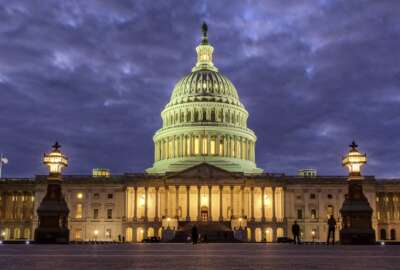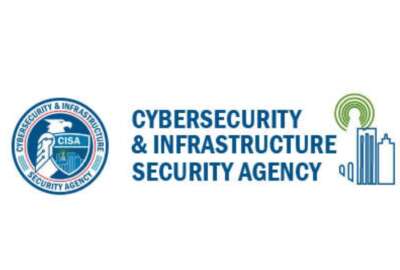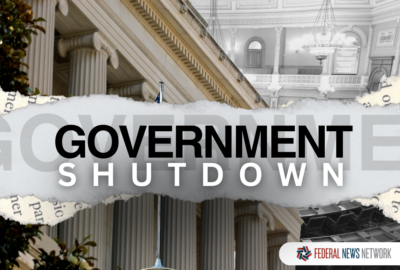Closures, Social Security checks, furloughs: What a government shutdown might mean
Congress has until midnight Friday to come up with a way to fund the government, or federal agencies will shutter. It's up to each federal agency to determine how...
Congress has until midnight Friday to come up with a way to fund the government or federal agencies will shut down, meaning hundreds of thousands of federal employees could be sent home — or stay on the job without pay — just ahead of the holidays.
Republicans abandoned a bipartisan plan Wednesday to prevent a shutdown after President-elect Donald Trump and billionaire Elon Musk came out against it. Trump told House Speaker Mike Johnson to essentially renegotiate the deal days before a deadline when federal funding runs out.
On Thursday, Republicans did just that, putting together a revamped government funding proposal that would keep the government running for three more months and suspend the debt ceiling for two years, until Jan. 30, 2027. But the bill failed overwhelmingly in a House vote hours later, leaving next steps uncertain.
Early Friday, some of Johnson’s biggest critics brought their grievances to a private meeting in his Capitol office to seek a way forward, but some expressed doubts a new vote would happen before the deadline.
Here’s what to know about a possible government shutdown, what agencies would be affected and how long it could last:
___
What does it mean if the government shuts down?
A government shutdown happens when Congress doesn’t pass legislation either temporarily or more permanently funding the government, and such a measure isn’t signed by the president.
When would a government shutdown start?
If Congress doesn’t approve a continuing resolution or more permanent spending measure by Friday, the federal government will shut down.
When the fiscal year ended Sept. 30, Congress passed a temporary funding bill to keep the government in operation.
That measure expires on Friday.
Which government agencies would be affected by a shutdown?
Each federal agency determines its own plan for how to handle a shutdown, but basically any government operations deemed non-essential stop happening, and hundreds of thousands of federal employees see their work disrupted.
Sometimes workers are furloughed, meaning that they keep their jobs but temporarily don’t work until the government reopens. Other federal workers may stay on the job but without pay, with the expectation that they would be paid back in full once the government reopens.
The basic rules for who works and who doesn’t date back to the early 1980s and haven’t been significantly modified since. Under a precedent-setting memorandum penned by then-President Ronald Reagan budget chief David Stockman, federal workers are exempted from furloughs if their jobs are national security-related or if they perform essential activities that “protect life and property.”
Essential government agencies like the FBI, the Border Patrol and the Coast Guard remain open. Transportation Security Administration officers would continue to staff airport checkpoints. The U.S. Postal Service also won’t be affected because it’s an independent agency.
But national parks and monuments would close, and while troops would stay at their posts, many civilian employees in agencies like the Department of Defense would be sent home. Court systems would be affected, too, with civil proceedings paused, while criminal prosecutions continue.
Automated tax collection would stay on track, but the Internal Revenue Service would stop auditing tax returns.
Will a government shutdown affect Social Security checks?
No. Recipients of both Social Security and Medicare would continue to receive their benefits, which are part of mandatory spending that’s not subject to annual appropriations measures. Doctors and hospitals would also continue to get their Medicare and Medicaid reimbursements.
But it’s possible that new applications wouldn’t be processed. During a government shutdown in 1996, thousands of Medicare applicants were turned away daily.
What is a “CR,” or continuing resolution?
When Congress is down to the wire on passing measures to fund the federal government, the term “CR” often comes up. What does it mean?
“CR” stands for “continuing resolution,” and it’s a temporary spending bill that lets the federal government stay open and operating before Congress and the president have approved a more permanent appropriation.
A “clean CR” is essentially a bill that extends existing appropriations, at the same levels as the prior fiscal year.
What is an omnibus bill?
It’s a massive, all-encompassing measure that lawmakers generally had little time to digest — or understand — before voting on it.
There are a lot of spending measures all rolled into one, and sometimes that’s what happens if the dozen separate funding measures haven’t worked their way through the congressional spending process in time to be passed in order to fund the federal government.
But Republicans opted against an omnibus this time, hoping instead to renegotiate all federal spending next year when Trump is in the White House and they will control both chambers of Congress.
Is a government shutdown going to happen?
Maybe — and maybe not.
There is often a scramble on Capitol Hill to put together a last-minute funding package to keep the government open just before a deadline, at least temporarily. But shutdowns have happened, most recently six years ago, when Trump demanded funding for a wall along the U.S.-Mexico border. That shutdown was the longest in U.S. history.
Jimmy Carter saw a shutdown every year during his term as president. And there were six shutdowns during Reagan’s time in the White House.
___
Kinnard reported from Charleston, South Carolina, and can be reached at http://x.com/MegKinnardAP.
Copyright © 2025 The Associated Press. All rights reserved. This website is not intended for users located within the European Economic Area.






